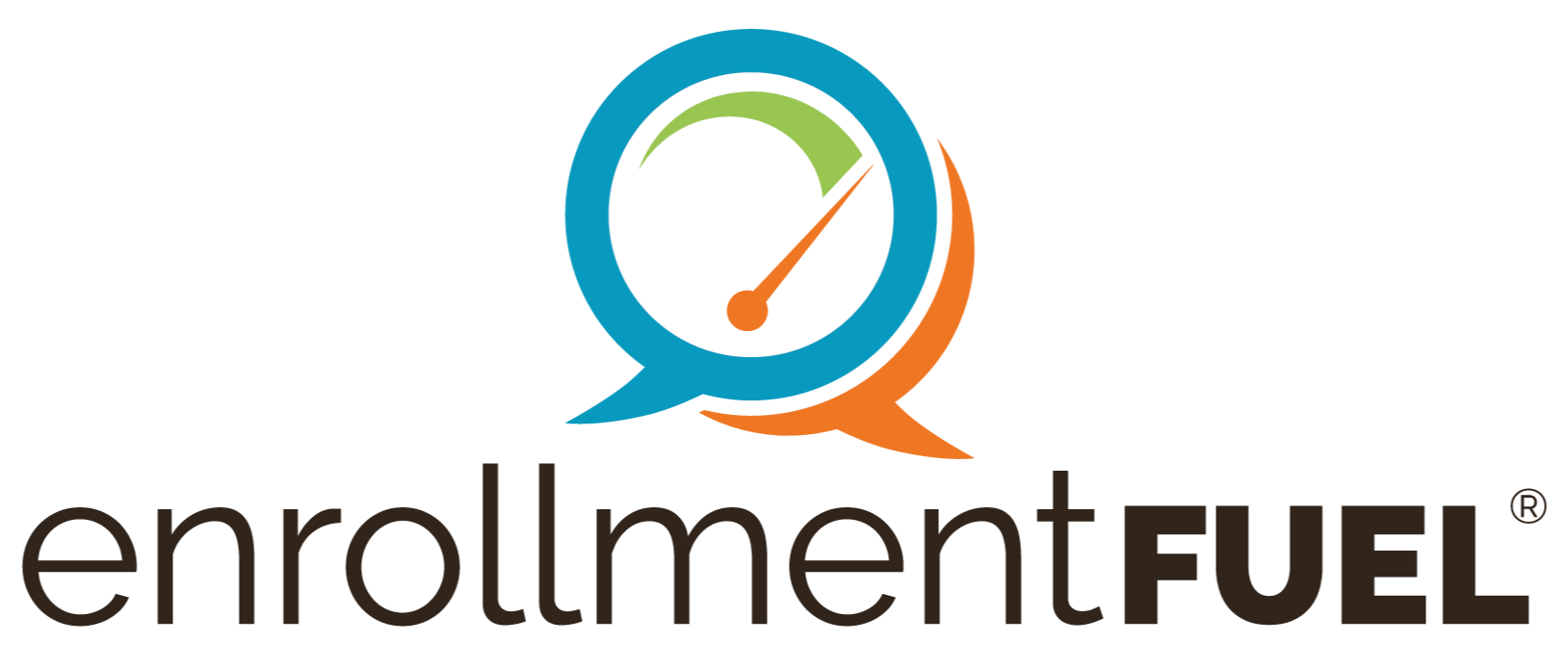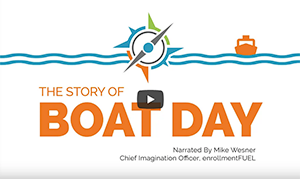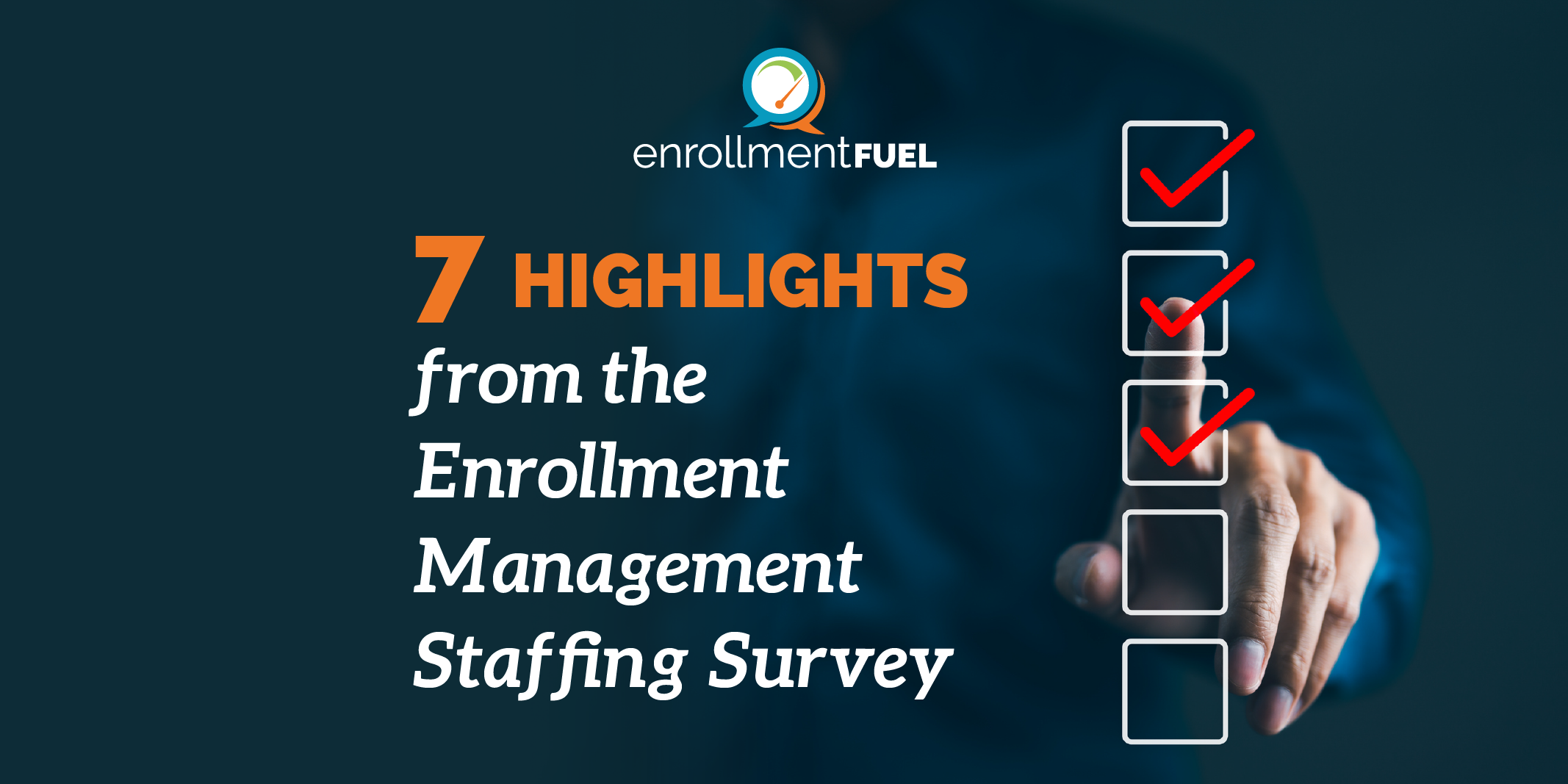I recently wrote an article, The Year Ahead: Three Fundamental Drivers for Recruiting Success for the 12th printing of our Octane magazine. It examines areas of need for every enrollment leader. All enrollment leaders can benefit from having a suite of digital program tools that can solve the challenges outlined in this discussion. Today, I want to continue journeying with you as you learn more about how to effectively add digital communications to enhance your ongoing marketing efforts.
At enrollmentFUEL, we want to lead you through the digital transition that is happening in our world.
During the last enrollment cycle, we noticed a correlation--those clients who were experiencing record enrollment were also those letting us innovate for them using new digital marketing techniques.
We like how digital marketing makes Student Search better. When I examine some of the things we’re doing with digital, I’m reminded of the old BASF TV commercials that went something like this: “At BASF, we don’t do X, we do X better.” Digital is taking on a whole new level of importance because it makes everything else you do better. It is the background hum of activity that makes your Student Search campaign perform better. Most enrollment shops have a solo act trying to convert more applications, campus visits, and deposits. If you want backup singers to provide harmony and some dance moves, you need digital.
To help you with this transition, enrollmentFUEL is creating a regular blog post series introducing you to digital trends. It is my hope that these blogs also create a community of followers that develops into a regularly scheduled digital think tank meeting we’re calling FUEL Tank. We’ve got an exciting lineup of topics, subject matter experts, podcasts, and round table discussions planned for you.
Other planned blog topics and podcasts include:
- Having a Bing, Bang, Bongo strategy of being found, generating leads, and proper attribution analysis
- SEO and why it is so important you do an audit and implement a long-term plan
- Micro-influencer campaigns and how you can get your alumni working for you on social media, where forms can be a new list source for you
- The future of list purchasing and how look-alike modeling may provide future new student lists for many
- How post-campaign measurement and attribution modeling will help you see the stealth activity that many have been missing for a long time
So, in this first blog, I’ll introduce a topic I want you to know about immediately—Connected TV. Then, we will follow with other exciting topics you’ve always wanted to know about digital marketing and how you can dip your toe into these active streams of marketing promise.
Connected TV is an opportunity for enrollment marketers that has been energized recently by more and more families “cutting the cord” and trading in cable TV for a variety of streaming options. It’s exciting, and you need to be planning for it. As you continue to get ready for this new wave, please relax and know that if you have any amount of video content, our team can easily edit and produce powerful 30-second spots to help you get started.
Connected TV
Long gone are the days (mostly) where brands need a big-time Madison Avenue advertising agency to make high budget production television commercials. You don’t need a 21st-century version of Don Draper to promote your brand across programming from T.V. Guide’s top shows of the week.
Enter Connected TV into the world of digital advertising. Connected TV is Smart TVs, or streaming apps, or devices on your phone, computer, or tablet (think Hulu, Roku, Chromecast, Apple TV, Amazon Fire TV Stick, Xbox, PlayStation, and even YouTube channels) that access content connected through the internet. The humor is not lost on me in that Connected TV is strongly based toward those who have “cut the cord” from the cable companies' grip.
So, what exactly is the Connected TV difference? When you watch your cable provider or network TV shows live or on DVR, the ads that you’re seeing are broad in nature, very limited in targeting criteria, and even more so in metrics. They are seen by everyone watching that show at that time, in that geographic area. The ability to target and track metrics from traditional TV advertising is as limited as my ability to impress NFL scouts with my command of the RPO offense. But now, with Connected TV, when you’re watching Diners, Drive-Ins, and Dives on Hulu, the ads you’re seeing are targeted more specifically, to you. Commercial spots are now auctioned at an ad exchange—sort of like today’s more modern stock market that automates supply and demand transactions. Essentially, these ads are “served” very similar to how a retargeted banner ad is displayed on your computer screen.
Let me translate this for you. You now have the ability to affordably send a very relevant 30-second TV commercial to audiences as small as your inquiry or applicant pool telling them specifically what you want them to do next.
182.6 million people in America accessed their video content through Connected TV in 2018, and that number is expected to grow to just over 204 million in 2022 (Verna.) Think about how many of these viewers include your suspects or prospects. This is a prime market for enrollment leaders wishing to make an impact on potential recruits to elevate mindshare.
Take the benefits of what online digital marketing provides and mix it with traditional Student Search, and you get a powerhouse of potential leads. This is the future of cutting-edge recruitment because of the new “cutting-cord” marketplace.
3 Benefits of Connected TV:
- Budget Friendly: Because of the strong ability to target, Connected TV advertising gets your video in front of the students (or families) you’re looking for. This way, you’re not paying for eyeballs that aren’t relevant to your message.
- Audience Targeting: Brands can build an audience profile down to time of day preferences, retargeting, and look-alike modeling. Coupled with information already collected with Facebook, Google, an Apple ID, and other cookie data, advertisers can target by age and geographic area—down to the zip code. They identify interests and other behavior to put together the best chances of reaching your target audience.
- Real-Time Metrics: Hone in on your Connected TV ad buys. By answering the questions of which shows, demographics, geographics, device types, IP addresses, and how many impressions are served before some conversion action, you can start to optimize from the real-time metrics. This will circle back to #1, “Budget Friendly.” When you have information like this at your fingertips, you can set frequency capping, which will limit the number of ads shown and can help your budget—conscious spending, but not limit your ability to gain traction in your campaigns.
Looking at the above benefits, it’s easy to find a path to smarter but even bigger and better ad buys. When you understand your metrics, you can optimize your targeting, and when you’ve done this, you can afford more budget, and increase your viewership with buys on more premium inventory. Just like any other enrollment tactic like name buys or digital marketing, you can start smaller and scale your way upward.
Bonus Benefit: The Actual Ads
With CTV ads, you can experiment with your video creative. Talk to your student ambassadors, or even close prospects with whom you have already built a relationship to get feedback. Students are your focus groups, so ask them about preferences to include static images, video, call to actions, length, and interactivity or engagement. Imagine what goes into the production of a single Super Bowl ad. Now, think if they had the power to test various ads at the same time from large viewership. The metrics from those ads could guide the rest of the year. This is what we are suggesting, but for your entire prospect pool.
Are You Still Watching?
Connected TV is not a future tactic to think about with your marketing and recruiting teams. It’s a NOW initiative to start considering. Imagine all the new shows you read or hear about from friends and family. Think about how often you stream your own favorite shows. The only thing you may not have considered is the ads in your video content and how targeted they are to you. If you’re like me, the next time you’re binge watching a five season series on YouTubeTV, you’ll be a little more curious why you’re seeing the ads for the Subaru Outback (mine is 11 years old) and car insurance (I have a new driver and have been recently shopping for better rates).
Bing, Bang, Bongo! Inside the FUEL Innovation Lab
In our next blog, we’ll talk about the framework necessary for digital success by using the old technique we learned in high school to help us organize our essay writing with the Bing, Bang, Bongo method. I will explain the necessary evolution of putting yourself in position to be successful with digital marketing. The BING is fixing your FIND. You’ve got to be found when folks are searching for you. Everything starts with that. The BANG is sending out ads, whether IP targeting in the pre-marketing phase, or retargeting deeper in the relationship. It’s similar to pinging with active sonar to find enemy subs in the depths of the deep blue sea. In another life, I was trained to find submarines. A big part of finding was simply listening with hydrophones towed from a ship (or dropped by a helicopter) and transformed into a buoy supporting an antenna for transmitting what is being listened to.
Today, we have to also listen to what digital tools are doing and analyze what is happening. We can actively ping from those on a purchased list, but we also have to do some cool things to develop new contacts organically.
The BONGO includes our social media strategies, look-alike modeling techniques for serving ads to find new leads, landing pages to aid lead capture, matchBACK™ code and the listening required to identify stealth website visitors, and inquiryDETECTOR™, a new solution to identify organic leads.
It will be great discussion as we develop a community of practitioners who leverage digital solutions to be more effective enrollment managers.
Feel free to reach out to me for a private consultation about how Connected TV and other emerging technologies may be able to help you also have a year of record enrollment.
Mike Wesner, M.Ed., is the founder of enrollmentFUEL and a passionate student of digital advertising strategies. In his role as Chief Imagination Officer, he works with the team to develop new products to help enrollment leaders bring in their class and set enrollment records. Reach out to Mike at mike.wesner@enrollmentFUEL.com to share ideas on where enrollment management is headed in the year ahead.
Verna, Paul. “Connected TV Advertising.” EMarketer, 23 Aug. 2018, www.emarketer.com/content/connected-tv-advertising.
Related Articles
A SMALL STUDENT SEARCH SOLUTION WITH BIG WINS
In 2009, I met with the Admissions team at Duke University. Our conversation covered many topics,...
Tips for Deploying Digital Marketing During Yield Season
An unfortunate reality for Admissions teams is that the traditional Yield recruitment...
Name Buys During the Pandemic
Picture this…America…2020…
COVID hits. Standardized testing dates have been cancelled around the...




